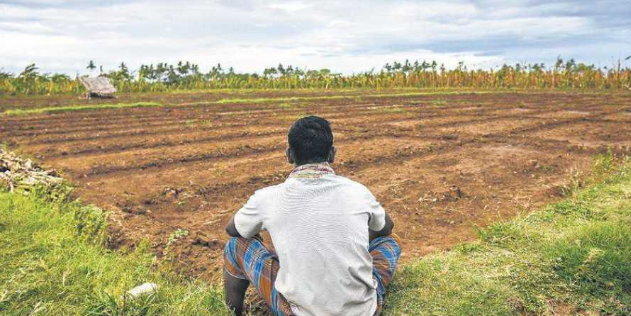
The sowing of main kharif crops has slowed as the monsoon has delayed in several parts of India after a timely start. Regardless of when the rains arrive, the sowing time of crops like moong, urad, and, to a lesser extent, cotton may be too short for farmers to get started.
The Ministry of Agriculture and Farmers' Welfare's All India Crop Situation report showed sowing in around 499.87 lakh hectares, down from 558.11 hectares last year, with area under all important crops, including moong, soyabean, paddy, and cotton, showing a decline.
Farmers planted soyabean over 92.36 hectares last year, down to 82.14 hectares this year; moong over 13.49 hectares, down to 11.92 hectares this year; and cotton, the key kharif cash crop, over 104.83 hectares, compared to over 86.45 hectares this year.
Bajra, a cereal crop, has been sown over 15.74 hectares, compared to 25.32 hectares in 2020. Oilseeds were sown over 112.55 hectares, down from 126.13 hectares in 2020. Pulses have also dropped, albeit slightly, to over 52.49 hectares from 53.35 hectares last year.
Sugarcane is one of the rare outliers, with sowing in excess of 53.56 hectares, compared to 52.65 hectares the previous year.
Farmers are either switching to shorter-duration crops or waiting for enough soil moisture to start sowing in the absence of rains.
The India Meteorological Department (IMD) has been using a new monsoon onset and withdrawal calendar since 2020, with July 8 as the normal date for rains to reach all parts of the country. Except for the first two weeks of June, the country had gotten 229.7 mm of rain as of Friday, July 9, 6% less than the typical of 243.6 mm, with regional distribution revealing a rainfall deficit.
The largest significant shortfall, of 18 percent, was reported by Northwest India. Monsoon was delayed in Delhi, Punjab, Chandigarh, Haryana, and Western Rajasthan as of Friday. Delhi is one of the most deficient states this season, with a deficit of -58 percent.
If there isn't adequate soil moisture by July 15, farmers are usually advised not to sow groundnut, moong, or urad. If the rains persist until the end of July, cotton planting will be hampered.
In the sections of the country that have yet to receive rains, however, 2021 will not be the most delayed monsoon onset. Rains arrived on July 7 in 2012, rather than the usual date of June 29.
Between 2010 and 2020, most previous monsoons experienced a similar break-phase between June fourth week and early July, however none lasted longer than 11 days. This time around, the respite has lasted over three weeks. According to the IMD, the 2013 monsoon set a new record for the fastest advance across the entire country – 10 days — since 1941.
The monsoon is poised to return, according to the latest weather forecast, as easterly winds from the Bay of Bengal have begun to blow along the lower levels. The monsoon is expected to reach the remaining parts of West Uttar Pradesh, Delhi, Haryana, Chandigarh, Punjab, and Rajasthan by July 10, according to the Met Office's Friday morning weather report.

















